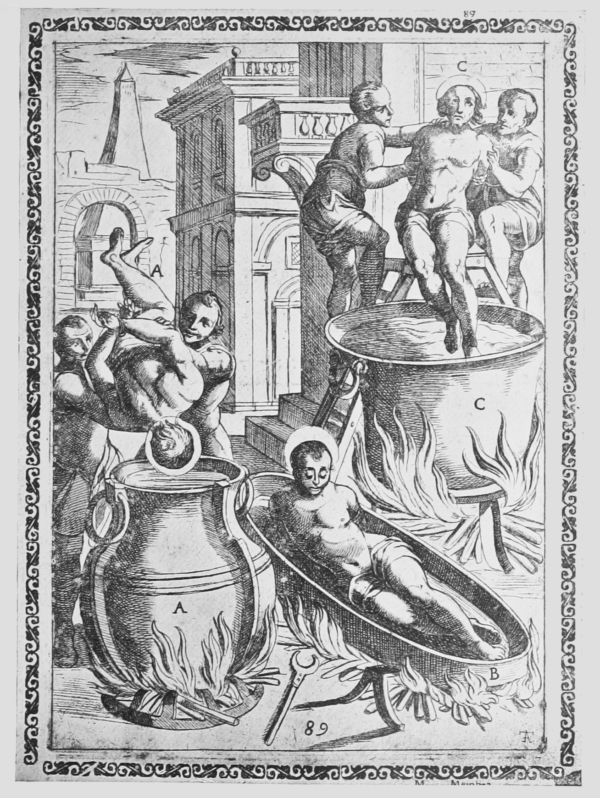Death By Boiling

Wikimedia CommonsMost victims were boiled in water, though this Medieval execution method sometimes involved hot oil or wine.
Boiling someone to death was an unspeakably agonizing endeavor. Though the Roman emperor Nero reportedly killed thousands of Christians with this method long before the Middle Ages, it would also become a popular way of punishing coin forgers, especially in the Holy Roman Empire.
Later on in Britain, King Henry VIII introduced the practice of boiling to death as a way to execute people who used poison to commit murder.
As one might expect, people sentenced to this punishment were simply placed in a large container of heated liquid, which might be water, oil, wax, or even molten lead. And then they basically got cooked.

Wikimedia CommonsDeath by boiling saw the victim literally get cooked before they died.
The sensation of being boiled alive was an absolutely horrific one. The method could be made even worse if the water had yet to reach boiling temperatures by the time the person was submerged.
Oftentimes, the limbs and extremities were the first things to burn. After the person’s outer layers began to cook, their organs began to cook as well. The fluids rose in temperature until they were also boiling.
All who went through this Medieval execution could only pray for a fast and merciful death. But boiling to death was unfortunately a very slow process.
A quick death would only come if the liquid was already boiling when the victim was dunked in. They might also be able to speed up the process if they ducked their head underneath the liquid to boil their brain. But otherwise, it was long and torturous until the very end.

Wikimedia CommonsSome religious scholars believed John the Apostle survived being boiled alive. In reality, boiling to death usually meant an excruciating demise.
Boiling to death was undoubtedly one of the worst possible ways to die in the Middle Ages. Since the victim would probably remain conscious, he’d notice his eyes burning, clothes fusing with his body, and skin blistering. While this should have been reserved for only the worst offenders, it soon became the go-to execution method for forgers of all people.
In both France and Germany from the 13th to the 16th century, illegal “coining” was such an egregious crime that anyone caught producing new coins from melted fragments would die via boiling. It was only when authorities realized they could mint coins with milled edges and thus make it clear if a coin was fake that this practice finally started to come to an end.





